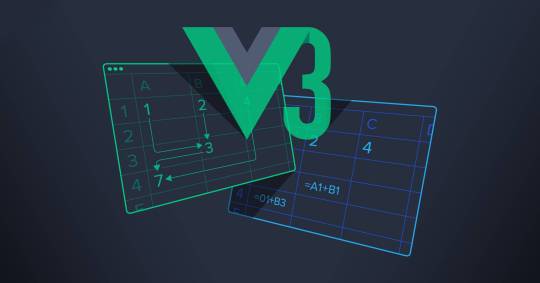#vuejsframwork
Text
Top Features of the Latest Version of Vue.js Framework | Copperchips
The latest version of Vue.js framework was released on September 18, 2021. This Vue.js 3.0 is a result of months of planning and efforts. This planned upgrade of the Javascript framework is utilized for building a web user interface. This novel version of Vue.js has etched its place in the market as well in the hearts of many developers. Let us see through this article, what were the initial expectations of the Vue.js developers and if the latest version stands up to their standards.
Vue.js 3.0 Features

In the past few years, there have been changes in the landscape of Vue.js framework development. Its community has evolved from a small upstart to a fully-fledged SPA library. With version 3.0 on the brim of Vue.js framework, the team of developers has provided few supports to augment the library, simplify coding on Vue, and adopt modern techniques of web development.
Let us dive into the technicalities of the latest version of Vue.js framework.
Composition API
The components included in Vue.js framework version 2.0 were created with the object-based options API. One of the novel features of the latest version of Vue.js framework is that it has added a set of function-based APIs that are called Composition API. These APIs have been added to confront issues faced by Vue.js 2.0 for large projects.
The composition API is the root cause of controversy for the Vue community. It can be seen as a novel way of developing components. The composition API need not be installed like a plug-in like before. Instead, it can be used without any additional setup as it is built-in within the package.
The community of Vue.js Developers formulated a composition API to enhance the quality of the code by enabling decoupling features of the logic. In contrast to Vue.js framework version, where developers rely on extending the object and then sharing logic, Vue.js framework version 3.0 enables sharing features via standard JavaScript/TypeScript patterns instead of inventive novel ones. This facilitates seeing the new features as they get added. Additionally, the Composition API makes it easier for the types to infer, which supports the typescript in a better way.
Vue.js version 3.0 allows Vue.js developers to build components along with allowing the new API to co-exist with the Options API, without replacing it. Composition API equips Vue.js developers with more flexible code organization and logic reuse capabilities along with other improvements. With Composition API, Vue.js developers can easily read the codes and organize the code in a better way.
Enhanced TypeScript Support
With the coming of Composition API, the internal functions of Vue.js framework are used as expected in javascript, which allows for much better TypeScript support. It results in enhanced type inferences with bindings returned from setup along with props declaration used to infer types.
TypeScript assists in enhancing the maintainability of the Vue codebase and makes it easier for Vue.js developers to contribute. TypeScript is the most popular and frequent choice for large projects. Having Vue.js framework version 3.0 internals in TypeScript assists in benefiting fully from Vue’s TypeScript with the usual code support available in modern IDEs such as Visual Studio Code, or WebStorm. Since TypeScript’s Vue code is 90% JavaScript, The users of JavaScript also benefit from code intelligence features with contemporary IDEs.
Reactivity
In Vue.js framework version 2.0, the reactivity worked in a secretive way and it wasn’t exposed to the developer. The hidden details added to the confusion more than they should have. The latest Vue.js framework came to the rescue by supporting many ways of wrapping objects to ensure that they are reactive. Now, they can be wrapped with a ref function for scalar types. This assists in reading and writing the property directly with .value.
READ MORE
SOURCE: COPPERCHIPS
#copperchips#vuejsdevelopment#vuejsframwork#vuejs#vuejsdevelopers#customsoftwaredevelopment#customsoftware#softwaredevelopment#webdevelopment#itservices#itsolutions
0 notes